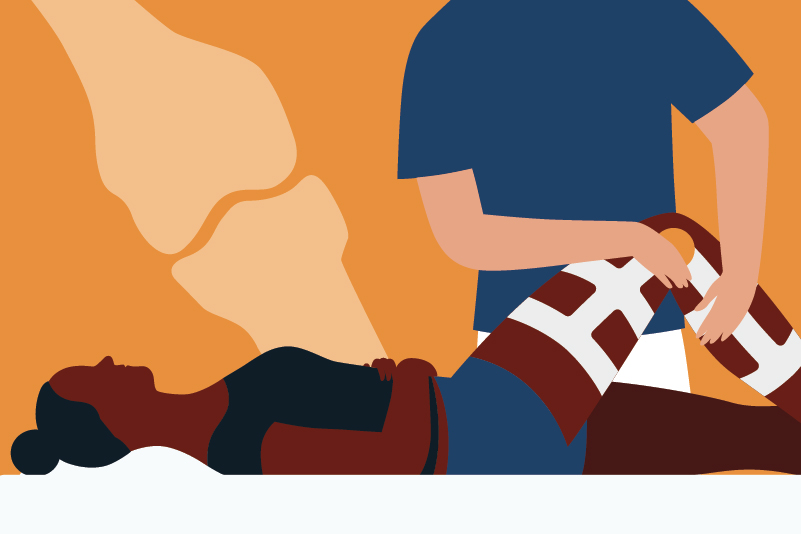#135 Corticosteroid shots and knees: A match made in osteoarthritis heaven?

Reading Tools for Practice Article can earn you MainPro+ Credits
Join NowAlready a CFPCLearn Member? Log in
- Pain: On a 100 point Visual Analogue Scale (VAS) steroids statistically significantly reduced pain (from ~54 baseline)4 more than placebo:
- 21-22 points lower at one week,1,2 16.5 points lower at two weeks,3 7.4 points at 3-4 weeks.1
- Average ~15 points better between 1-4 weeks.4
- At later time points, difference is non-statistically significant.1
- Maximal effect may occur at 1.5 weeks.4
- 21-22 points lower at one week,1,2 16.5 points lower at two weeks,3 7.4 points at 3-4 weeks.1
- Pain: Hitting a particular pain reduction target or global improvement:
- 74-78% for steroid vs. 45-54% placebo.1-3
- Number Needed to Treat (NNT)=3-5, at 1-4 weeks.1-3
- Results at >4 weeks inconsistent: Two found no effect,1,2 one reports NNT=5 at 16-24 weeks.3
- 74-78% for steroid vs. 45-54% placebo.1-3
- Function and stiffness not reliably changed.5
- Issues: Included RCTs were frequently small (≤50) and often short (example one week). Pooled results also often included few studies and lacked power.1-6
- Overall, corticosteroid injections may be most efficacious therapies for knee osteoarthritis in the first 1-4 weeks.4,5
- Unclear if one type of steroid better than another.7
- Maximum frequency ~4/year.
- RCT injected steroids 4x/year for two years without any harms.8
- Cohort of ≥4 injections/year found no harm.9
- Which clinical features influence success is unclear10,11 but increased radiographic severity may reduce effectiveness while increased clinical severity (pain and stiffness) may improve effectiveness.10
- Risk of joint infection one in 14,000-77,000 following intra-articular injection.12
- Guidelines generally recommend corticosteroid intra-articular injections,13,14 although uncertainty (due to insufficient long-term evidence) remains.15







 Complete Activity
Complete Activity
Quite a placebo benefit here, and it would be good to know how to capitalize on that.